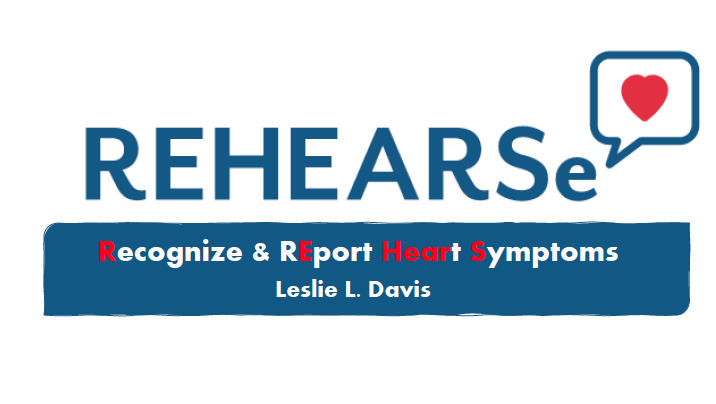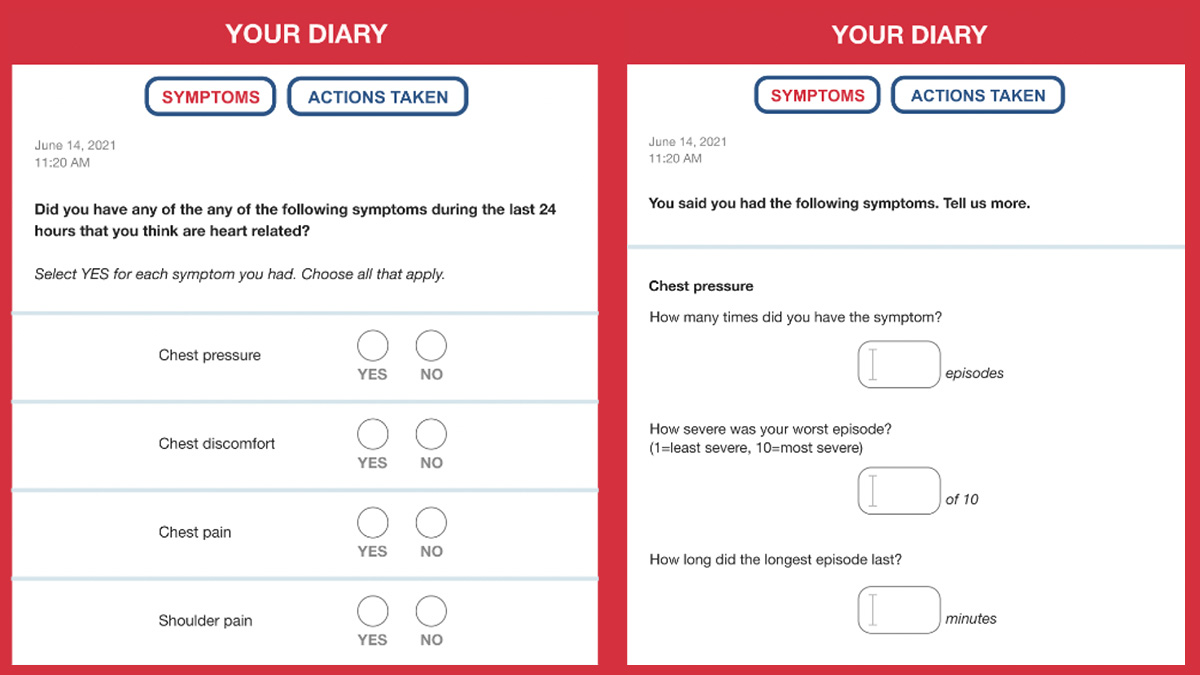Carolina researcher works to prevent second heart attacks
Leslie Davis at the UNC School of Nursing is working to help women avoid second heart attacks by empowering North Carolinians to protect themselves through engagement in their self-care.

One out of every five women will have a second heart attack within a year of having the first one.
“The highest risk for women, in particular, is the first 30 days after their heart attack, which is often before they ever start cardiac rehab,” said UNC School of Nursing Associate Professor Leslie Davis. “So, during this vulnerable period after a heart attack, they could have another. Yet a lot of women believe they aren’t going to have a heart attack: They get their treatment and think they’re cured. Often symptoms return and knowing how to watch for recurrent symptoms and notify their health care team can help prevent the next heart attack.'”
Drawing on more than two decades of experience as a nurse practitioner in clinical settings, Davis is partnering with the UNC School of Medicine and UNC Gillings School of Global Public Health to empower patients in North Carolina to change that statistic and protect themselves through engagement in their self-care and taking action should symptoms recur.
 Davis and her team have developed a new educational program called REHEARSe — short for Recognize and Report Heart Symptoms — to engage and teach patients who recently had heart attacks how to monitor for recurrent symptoms through a daily electronic diary so they know when it’s time to talk to their health care team, call 911 or go to the emergency department.
Davis and her team have developed a new educational program called REHEARSe — short for Recognize and Report Heart Symptoms — to engage and teach patients who recently had heart attacks how to monitor for recurrent symptoms through a daily electronic diary so they know when it’s time to talk to their health care team, call 911 or go to the emergency department.
In combination with other interventions — most notably cardiac rehabilitation — Davis believes the program can help catch recurrent symptoms to intervene, preventing second heart attacks from occurring.
“We need more resources for men and women to get the education and skills training that they need right away while also encouraging them to enroll into cardiac rehab,” she said. “We need both approaches. Nurses are ideally positioned to teach this content to patients in real-world settings, even virtually, like our team is doing. We have the knowledge. We know what to do, but we need to get it in the hands of those who just had a heart attack because we know they could have another one, and in doing so, we can prevent heart attacks.”
A new perspective
Heart disease and acute coronary syndrome — or heart attacks — have long been viewed as a disease that mainly affects men. Davis cites the often-used textbook image of an older, White male on a snowy day holding his chest as the prime example of the assumption that heart attacks happen mostly to men. And although Davis does tend to see higher numbers of men admitted for heart attacks, they’re still the No. 1 cause of death for women in the United States.
“While the death rates, mortality, morbidity and other conditions they can get after [a heart attack] are going down with evidence-based treatment, women still have this disparity that they have higher death rates and higher morbidity after their heart attacks,” she said.
Davis said that throughout much of her nursing career, the thought was that women were denying symptoms and, therefore, not seeking medical attention, but the issue was more complex than that. Women haven’t been educated about the variability of symptoms, what different symptoms mean in relation to their other medical conditions or what to do if symptoms return.
Combine that with the whirlwind of treatment after a heart attack and quick hospitalizations, and patients are going home tired and largely unprepared for what to do next, Davis said.
REHEARSe
Working with experts from the UNC Gillings School of Global Public Health to design a user interface and with the School of Medicine to identify patients, Davis developed REHEARSe to teach women who just had a heart attack to recognize and monitor future heart attack symptoms themselves.
REHEARSe starts with one-on-one individualized educational sessions delivered virtually, led by Davis or another nurse. With the sessions held virtually, Davis can reach North Carolinians in rural and underserved areas, providing crucial health care support to people less likely to attend cardiac rehab.
The sessions last between 45 minutes and an hour, with the nurse tapping into what Davis calls “the art of nursing” to teach patients the basics in plain language. At the core of the education is the principle of self-care: how to maintain good health to prevent another heart attack, monitor changes through tracking recurrent symptoms and act when symptoms arise.
“I spend a lot of time on how to recognize in your body that something’s changed and how to report it,” she said. “It’s not enough to recognize it. We know from other chronic heart conditions that people can track their weight and track this and that, but they don’t necessarily do anything with that information. I want them to be able to recognize and report the recurrent symptoms.”
Seven to 10 days before the second heart attack, symptoms begin to change for most patients, so having a record of those symptom pattern changes can be life-changing. REHEARSe provides the patients with a virtual daily diary for 30 days that helps them track 13 symptoms to allow the patient — and their medical team — to look at the frequency, duration and severity of symptoms that could indicate another heart attack is coming.

The virtual dairy helps patients track symptoms after having their first heart attack. The dairy tracks symptoms, intensity and how long they lasted.
Davis and her team are currently analyzing data from the first pilot study testing the REHEARSe program to fine-tune the process for their next study launching in a few months. They have already found a notable increase in patient knowledge, which provides patients the confidence to recognize their symptoms and seek help before it’s too late.
The data have also shown that women are having many more symptoms than researchers previously knew. While REHEARSe can play a crucial role in a patient’s health after a heart attack, Davis notes that it should be just one facet of a strategy that also includes cardiac rehab.
“We’re going to need a multipronged approach to tackle this to prevent future heart attacks,” she said. “So much has been about once they get to the hospital with that first or second heart attack. We have to get ahead of it to prevent future heart attacks in those at highest risk.”
With REHEARSe preparing for its next testing phase, Davis is beginning to look at the long-term impact of the program, such as what happens beyond the first risky 30 days and whether the program should be as successful for male patients.
“It is very scalable and realistic to be part of heart attack care for the whole country,” Davis said. “We could be a leader at UNC. This could change care for women and men and prevent future heart attacks.”




